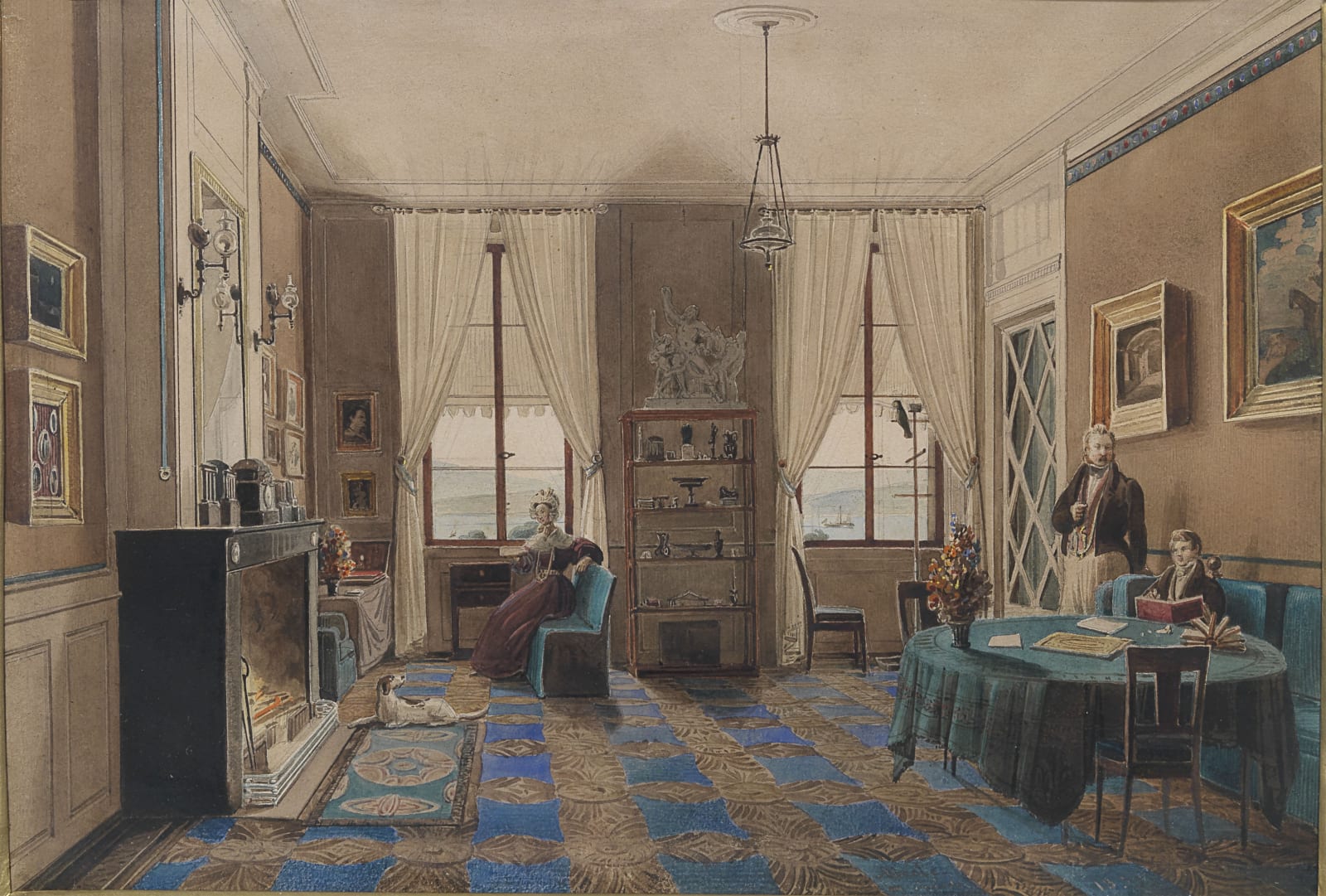Jodocus Sebastiaen van den ABEELE 1797-1855
This watercolour conveys a clear vision of an interior reflecting the aesthetics of the haute bourgeoisie in the first half of the 19th century. The meticulously appointed room, together with a number of other clues, tells us that this is the residence of a cultured and well-to-do family.
The showcase in the middle of the room containing archaeological finds is one of the most striking things in the picture, and the owners' antiquarian taste is further borne out by the presence of a replica in biscuit of the celebrated sculpturale group depicting Laocoön and His Sons.
On the far wall, two large windows framed by curtains allow us a glimpse of a small portion of a vast lake.
The atmosphere is cultivated, yet imbued with a day-to-day feel as though the painter had captured a moment frozen in time, with the details on the table including a book and other humdrum items, the dog dozing in front of the fireplace and the figures intent on reading.
Van den Abeele first studied art at the Academy in Gent before taking the advice of David (who had been living in exile in Brussels since 1815) and moving to Paris in 1818, where he entered the workshop of Antoine-Jean Gros.
In 1823 he moved to Rome where the influence of his fellow painters Frans Vervloet and François-Marius Granet prompted him to direct his artistic interests away from his initial, prevailing focus on historical painting, towards subjects taken from daily life in the streets of the papal capital, treading in the footsteps of Louis Léopold Robert and Bartolomeo Pinelli.
While in Rome, Van den Abeele met and rubbed shoulders with members of the Bonaparte family, eventually being appointed master of drawing to Luigi Napoleone Bonaparte and being hosted by his pupil's mother Hortense in Villa Paolina from 1824 to 1830.
Moving to Florence in 1830, he continued to frequent the Bonaparte family in Palazzo Serristori, the residence of Giuseppe Bonaparte and of his daughter Carlotta.
Van den Abeele later returned briefly to Rome, where he painted a large number of watercolours depicting the interiors of the palazzi he visited, before making his way back to Belgium for good.
JOIN OUR MAILING LIST
Subscribe to our mailing list in order to receive news on new acquisitions, exhibitions, special previews and more!
* denotes required fields
We will process the personal data you have supplied to communicate with you in accordance with our Privacy Policy. You can unsubscribe or change your preferences at any time by clicking the link in our emails.
